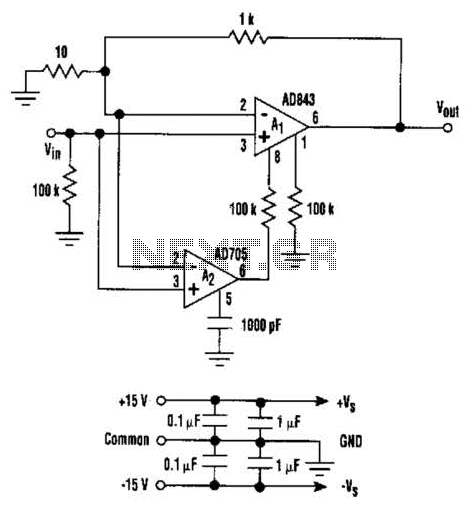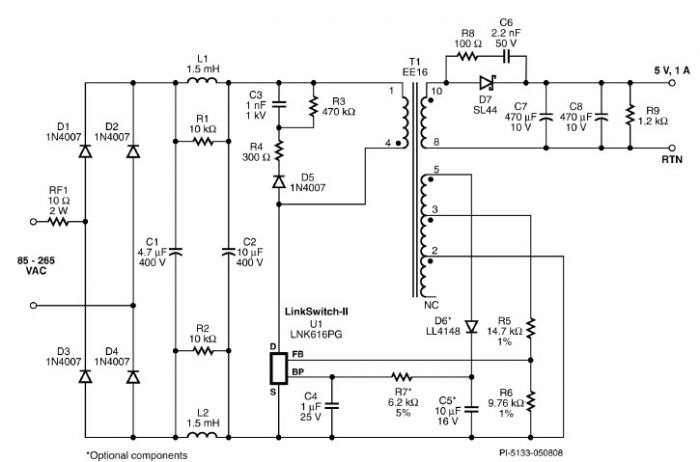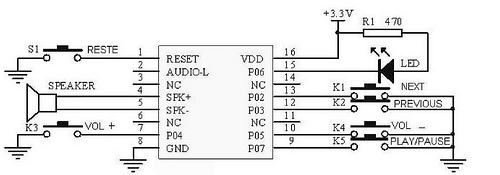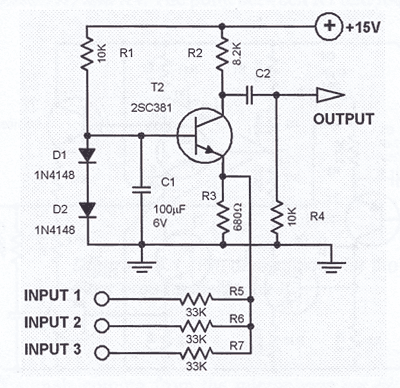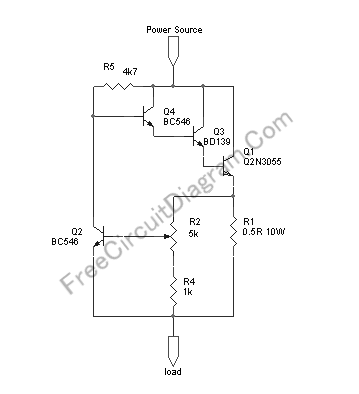
Emergency Light and Alarm circuit
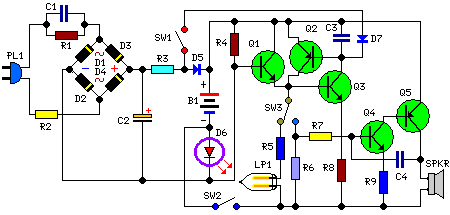
This circuit is permanently connected to a mains socket and is designed for trickle charging nickel-cadmium (Ni-Cd) batteries. In the event of a power outage, the lamp automatically turns on. An alarm sounder can be used in place of the lamp. Once the power supply is restored, the lamp or alarm is turned off. A switch is included to provide a "latch-up" function, allowing the lamp or alarm to continue operating even after the power has been restored.
The circuit operates on the principle of continuous battery charging while maintaining readiness for emergency situations. It incorporates a power supply module that connects to the mains socket, ensuring that the Ni-Cd batteries are kept at optimal charge levels. The charging circuit typically includes a diode to prevent reverse current flow and a resistor to limit the charging current, protecting the batteries from overcharging.
In normal operation, the circuit monitors the mains power status. During a power failure, a relay is activated, which connects the battery to the lamp or alarm sounder, providing immediate illumination or sound alert. The choice between the lamp and the alarm can be made based on user preference, offering flexibility in application.
The latch-up function is achieved through a momentary switch that, when pressed, keeps the relay activated even after the mains power is restored. This feature is particularly useful for scenarios where extended illumination or alerting is necessary, such as in emergency exits or security systems. The switch can be designed as a push-button or toggle type, depending on the specific requirements of the application.
Additional components may include an LED indicator to show the charging status and a fuse for circuit protection. The overall design should ensure that the circuit is compact and efficient, utilizing appropriate PCB layout techniques to minimize interference and maximize reliability. Proper thermal management should also be considered, especially in the charging circuit, to prevent overheating of components during prolonged operation.This circuit is permanently plugged into a mains socket and NI-CD batteries are trickle-charged. When a power outage occurs, the lamp automatically illuminates. Instead of illuminating a lamp, an alarm sounder can be chosen. When power supply is restored, the lamp or the alarm is switched-off. A switch provides a "latch-up" function, in order to extend lamp or alarm operation even when power is restored.. 🔗 External reference
The circuit operates on the principle of continuous battery charging while maintaining readiness for emergency situations. It incorporates a power supply module that connects to the mains socket, ensuring that the Ni-Cd batteries are kept at optimal charge levels. The charging circuit typically includes a diode to prevent reverse current flow and a resistor to limit the charging current, protecting the batteries from overcharging.
In normal operation, the circuit monitors the mains power status. During a power failure, a relay is activated, which connects the battery to the lamp or alarm sounder, providing immediate illumination or sound alert. The choice between the lamp and the alarm can be made based on user preference, offering flexibility in application.
The latch-up function is achieved through a momentary switch that, when pressed, keeps the relay activated even after the mains power is restored. This feature is particularly useful for scenarios where extended illumination or alerting is necessary, such as in emergency exits or security systems. The switch can be designed as a push-button or toggle type, depending on the specific requirements of the application.
Additional components may include an LED indicator to show the charging status and a fuse for circuit protection. The overall design should ensure that the circuit is compact and efficient, utilizing appropriate PCB layout techniques to minimize interference and maximize reliability. Proper thermal management should also be considered, especially in the charging circuit, to prevent overheating of components during prolonged operation.This circuit is permanently plugged into a mains socket and NI-CD batteries are trickle-charged. When a power outage occurs, the lamp automatically illuminates. Instead of illuminating a lamp, an alarm sounder can be chosen. When power supply is restored, the lamp or the alarm is switched-off. A switch provides a "latch-up" function, in order to extend lamp or alarm operation even when power is restored.. 🔗 External reference
